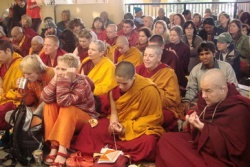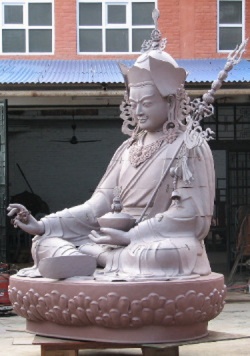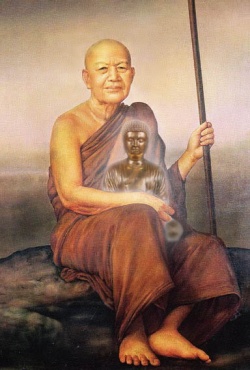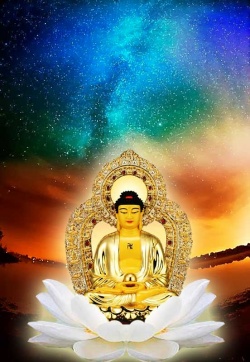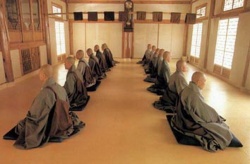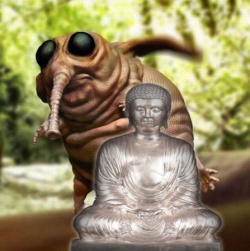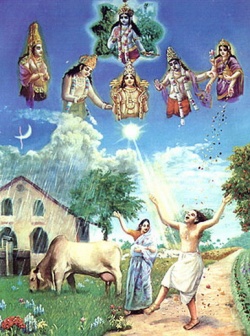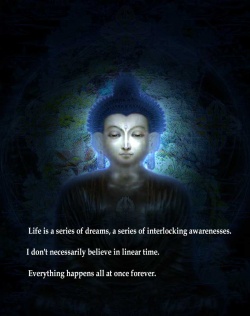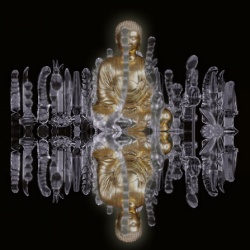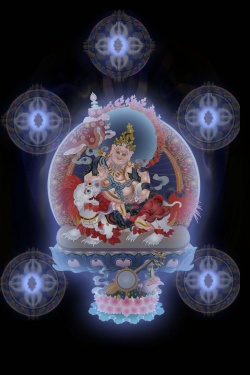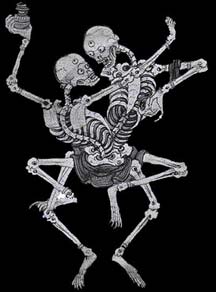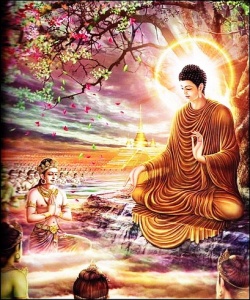Difference between revisions of "The Third Eye: Plato, Buddhism and Rampa"
(Created page with " <poem> I would like to dedicate this blog to several friends and relatives of mine who have recently experienced problems with the use of their physical eyes....") |
|||
| Line 1: | Line 1: | ||
| − | + | <nomobile>{{DisplayImages|4396|2443|3023|1205|2739|3640|4368|3327|1734|2083|1595|174|3958|147|4082|605|4523|1987|4220|2357|157|246|1512|2792|2611}}</nomobile> | |
| Line 7: | Line 7: | ||
| − | Entries in Wikipedia, despite the [[noble]] efforts of the workaholic Wikikids, are often riddled with incompatible, unsubstantiated and unique statements. Sometimes, it would seem, things are made up on the spot by the writers who add bits and pieces to them as they are constantly evolving. | + | Entries in Wikipedia, despite the [[noble]] efforts of the workaholic Wikikids, are often riddled with incompatible, unsubstantiated and unique statements. Sometimes, it would seem, things are made up on the spot by the writers who add bits and pieces to them as they are constantly evolving. |
| − | |||
| − | |||
| − | + | User-edited content, it's called. Sometimes over-edited seems more to the point when the product comes up on your {{Wiki|computer}} screen. | |
| + | The following link provides what I see as a good example of this, much of it unintelligible, or marked by obscure (unnamed) {{Wiki|sectarian}} concerns, and with little or no [[sense]] of how things may have developed within historical and {{Wiki|cultural}} contexts. | ||
| − | |||
| − | + | Rather than relying on the scattered ruminations of this nebulously authored Wikipedia entry, I will limit myself to three things: [1] the particular {{Wiki|concept}} of three [[eyes]] in Graeco-Egyptian sources that [[wind]] up in {{Wiki|Italy}}; [2] the multiple (3 or 5) [[eyes]] in [[Buddhist]] sources; [3] The [[Third Eye]] of T. [[Lobsang Rampa]]. | |
| − | + | For the first I rely entirely on an article by Michael J.B. Allen entitled "Marsilio Ficino on [[Plato's]] Pythagorean [[Eye]]." | |
| − | + | For the [[Buddhist]] sources I will rely almost entirely on an article by the late {{Wiki|Alex Wayman}} published under the title "The [[Buddhist]] {{Wiki|Theory}} of [[Vision]]." | |
| − | |||
| − | Both of our [[ancient]] sources attribute to {{Wiki|Plato}} himself this [[idea]] that he had a [[third eye]], while Ficino [[attributes]] it to other {{Wiki|Greek}} [[sages]]. Returning to Ficino's statement, we may easily see that one of the two [[eyes]] that [[people]] usually are seen to have is for [[seeing]] the [[realm of nature]] (the created [[universe]], divinely [or in any case not humanly] created), while the second [[eye]] is for [[seeing]] [[humans]] and humanly created things. The [[third eye]], which floats above the other two, located in the {{Wiki|forehead}}, is for [[seeing]] the [[divine]]. Boiling down Allen's learned [[discussion]], the three [[eyes]] correspond to the natural [[world]], the [[realm]] of [[human]] conduct (the [[moral]] [[sphere]]), and the [[metaphysical]] (the [[divine]] [[sphere]]). Ficino believed that {{Wiki|Plato}} was able to see the natural [[world]] according to {{Wiki|Heraclitus}} ([[objects]] of ordinary [[sense perception]] made up of the [[elements]]), the [[moral]] [[sphere]] of {{Wiki|Socrates}} ([[subject]] for discursive {{Wiki|reasoning}}), and the [[realm]] of [[pure]] [[Ideas]] of the Pythagoreans (intuitive {{Wiki|intellect}} or [[imagination]]). In short, the [[third eye]] is the Pythagorean [[eye]]. | + | One of a number of things glaringly absent from the Wikipedia treatment of the three [[eyes]] is this: There is not the least mention of {{Wiki|Plato}} (428-347 BCE). |
| + | |||
| + | Now [[Marsilio Ficino]] of [[Florence]] (1433-1499) was a great {{Wiki|intellect}} among the humanists as well as a [[practitioner]] of [[theurgy]] (intentional [[ritual]] identification with [[divine beings]] for purposes [[magical]] or [[spiritual]]). | ||
| + | |||
| + | He had a great impact on the subsequent history of [[western]] {{Wiki|Hermeticism}} and [[occultism]] more generally. He was a [[neo-pagan]] in his [[own]] times. | ||
| + | |||
| + | |||
| + | |||
| + | [[Ficino]] composed a lengthy commentary on the [[Philebus]] of {{Wiki|Plato}} in which the commentator says, "Among the wisest men of {{Wiki|Greece}} arose the saying that {{Wiki|Plato}} had three [[eyes]]: | ||
| + | |||
| + | one with which he looked at [[human]] things, another at natural things, and another at [[divine]] things. The last was in his {{Wiki|forehead}}, while the others were under his {{Wiki|forehead}}." (Translation by Michael Allen.) | ||
| + | |||
| + | The [[Philebus]] dialog itself, we should carefully note, has nothing to say about extra [[eyes]] of any kind. We're talking about Ficino's commentary here. | ||
| + | |||
| + | |||
| + | |||
| + | As M. Allen points out, there were probably only two [[ancient]] sources from which Ficino could have derived his [[idea]] of [[Plato's]] three [[eyes]]. One comes from the school of [[Olympiodorus]] of [[Alexandria]] in about the 6th century, available to us today in a {{Wiki|manuscript}} that was made in the 10th century. This source says, "It is said, in fact, that having found the {{Wiki|theory}} of [[ideas]] he [{{Wiki|Plato}}] dreamt that he had a [[third eye]]." | ||
| + | |||
| + | |||
| + | |||
| + | The other more [[ancient]] source is the one that was more surely known to [[Ficino]]. | ||
| + | |||
| + | This work, titled [[Contra Celsum]], written against a second-century opponent of [[Christianity]], a pagan-pagan by the [[name]] of {{Wiki|Celsus}}, was composed in 248 CE by the [[Alexandrian]] {{Wiki|church}} father [[Origen]]. | ||
| + | |||
| + | In the context [[Origen]] is asserting that [[Christianity]] doesn't after all make any claims that are all that outrageous, and as part of this argument he mentions some claims of pagans that he considers so utterly outrageous that they are scarcely worth considering (any outrageous claims of the [[Christians]] paling under the comparison). | ||
| + | |||
| + | Along with the ivory thigh of {{Wiki|Pythagoras}} (which is usually said to be made of {{Wiki|gold}}), he mentions in passing "the [[third eye]] that {{Wiki|Plato}} prided himself on possessing." For [[Origen]], this [[third eye]] of {{Wiki|Plato}} is just a "[[vulgar]] [[fantasy]]" (Allen, p. 173). | ||
| + | |||
| + | |||
| + | |||
| + | Both of our [[ancient]] sources attribute to {{Wiki|Plato}} himself this [[idea]] that he had a [[third eye]], while [[Ficino]] [[attributes]] it to other {{Wiki|Greek}} [[sages]]. | ||
| + | |||
| + | Returning to [[Ficino's]] statement, we may easily see that one of the two [[eyes]] that [[people]] usually are seen to have is for [[seeing]] the [[realm of nature]] (the created [[universe]], divinely [or in any case not humanly] created), while the second [[eye]] is for [[seeing]] [[humans]] and humanly created things. The [[third eye]], which floats above the other two, located in the {{Wiki|forehead}}, is for [[seeing]] the [[divine]]. | ||
| + | |||
| + | Boiling down Allen's learned [[discussion]], the three [[eyes]] correspond to the natural [[world]], the [[realm]] of [[human]] conduct (the [[moral]] [[sphere]]), and the [[metaphysical]] (the [[divine]] [[sphere]]). | ||
| + | |||
| + | [[Ficino]] believed that {{Wiki|Plato}} was able to see the natural [[world]] according to {{Wiki|Heraclitus}} ([[objects]] of ordinary [[sense perception]] made up of the [[elements]]), the [[moral]] [[sphere]] of {{Wiki|Socrates}} ([[subject]] for discursive {{Wiki|reasoning}}), and the [[realm]] of [[pure]] [[Ideas]] of the [[Pythagoreans]] (intuitive {{Wiki|intellect}} or [[imagination]]). In short, the [[third eye]] is the Pythagorean [[eye]]. | ||
___ | ___ | ||
| − | In [[Buddhist]] works, including the [[Pâli]] [[Nikâya]] {{Wiki|literature}} which is often regarded as earlier, one finds a list of three types of [[eyes]]. These are: the Flesh [[Eye]], the [[Divine Eye]], and the [[Insight]] ([[Prajñâ]]) [[Eye]]. In [[Mahâyâna]] writings in [[Sanskrit]] these three are often expanded to a list of five, by adding two further [[eyes]] to the list. The added [[eyes]] are [[Dharma Eye]] and [[Buddha Eye]], although some lists substitute [[Gnosis]] [[Eye]] for [[Dharma Eye]]. But already in the time of [[Vasubandhu]] we find some [[Mahâyâna]] writers {{Wiki|speaking}} of three [[eyes]], by which they mean: [[Insight]] [[Eye]], [[Dharma Eye]] and [[Buddha Eye]]. | + | In [[Buddhist]] works, including the [[Pâli]] [[Nikâya]] {{Wiki|literature}} which is often regarded as earlier, one finds a list of three types of [[eyes]]. These are: the Flesh [[Eye]], the [[Divine Eye]], and the [[Insight]] ([[Prajñâ]]) [[Eye]]. |
| + | |||
| + | In [[Mahâyâna]] writings in [[Sanskrit]] these three are often expanded to a list of five, by adding two further [[eyes]] to the list. | ||
| + | |||
| + | The added [[eyes]] are [[Dharma Eye]] and [[Buddha Eye]], although some lists substitute [[Gnosis]] [[Eye]] for [[Dharma Eye]]. But already in the time of [[Vasubandhu]] we find some [[Mahâyâna]] writers {{Wiki|speaking}} of three [[eyes]], by which they mean: [[Insight]] [[Eye]], [[Dharma Eye]] and [[Buddha Eye]]. | ||
| + | |||
| + | |||
| + | To review what it is that the [[five eyes]] see, in descending order: | ||
| + | |||
| + | The [[Buddha Eye]] sees all knowable [[objects]] without any obstruction (and of course have no obstructions due to those knowable [[objects]]), which is what [[Buddhists]] generally mean by the [[omniscience]] of the completely [[Enlightened Buddha]]. | ||
| + | |||
| + | The [[Dharma Eye]] is able to understand all [[scriptures]] ([[Dharma]]) as well as to identify the levels of [[spiritual]] [[development]] of other persons. | ||
| + | |||
| + | The [[Insight]] [[Eye]] can discern the particular and general [[characteristics]] of all the knowable [[objects]], while [[seeing]] their higher meanings. | ||
| + | |||
| + | The [[Divine Eye]] sees the [[world]] of [[forms]] in its {{Wiki|past}} states (the [[karmic]] prelude to the {{Wiki|present}} [[condition]]) and in its approaching states (as compelled by [[karma]] enacted in the {{Wiki|present}} time). The Flesh [[Eye]] sees only [[forms]] in their {{Wiki|present}} [[state]]. | ||
| − | |||
A significant point covered by [[Wayman]] is whether or not these [[eyes]] can function simultaneously. The simple answer is yes. | A significant point covered by [[Wayman]] is whether or not these [[eyes]] can function simultaneously. The simple answer is yes. | ||
| − | [[Asanga]] (4th or 5th century CE) explains the {{Wiki|distinction}} between the [[Divine Eye]] and the [[Insight]] [[Eye]] by saying that the [[Divine Eye]] is able to range over all [[visible forms]], while the [[Insight]] [[Eye]] is able to range over all [[forms]] both [[visible]] and {{Wiki|invisible}} without obstruction. But the "[[visible forms]]" that may be seen by the [[Divine Eye]] include the [[subtle bodies]] of [[beings]] in the [[intermediate state]] (in the transition between [[death]] and [[rebirth]]). For while the [[intermediate]] [[body]] is impossible for ordinary [[living beings]] to see, it *is* [[visible]] to other [[intermediate]] [[bodies]], so it is indeed possible (for certain [[beings]]) to see them, which makes them in [[truth]] vis-able. The [[Divine Eye]] can range throughout the [[Desire Realm]] ([[Kâma]] | + | [[Asanga]] (4th or 5th century CE) explains the {{Wiki|distinction}} between the [[Divine Eye]] and the [[Insight]] [[Eye]] by saying that the [[Divine Eye]] is able to range over all [[visible forms]], while the [[Insight]] [[Eye]] is able to range over all [[forms]] both [[visible]] and {{Wiki|invisible}} without obstruction. |
| + | |||
| + | But the "[[visible forms]]" that may be seen by the [[Divine Eye]] include the [[subtle bodies]] of [[beings]] in the [[intermediate state]] (in the transition between [[death]] and [[rebirth]]). | ||
| + | |||
| + | For while the [[intermediate]] [[body]] is impossible for ordinary [[living beings]] to see, it *is* [[visible]] to other [[intermediate]] [[bodies]], so it is indeed possible (for certain [[beings]]) to see them, which makes them in [[truth]] vis-able. | ||
| + | |||
| + | The [[Divine Eye]] can range throughout the [[Desire Realm]] ([[Kâma Dhâtu]]), and all the [[beings]] in it, which means in effect that those who have it may know what is going on anywhere from the [[six realms]] of [[Desire Realm]] [[gods]] all the way down to the sixteen [[hell realms]]. | ||
| + | |||
| + | |||
Now the [[Buddha Eye]] doesn't correspond well with any of [[Plato's]] three [[eyes]], because it is a post-Enlightenment [[eye]] that looks back with [[compassion]] on the entirely transcended [[world]]. [[Plato's]] [[Third Eye]] is for intuitive [[seeing]], its gaze oriented upwards toward [[divine]] things. If we try to chart out a correspondence, which more or less works out, it could be: | Now the [[Buddha Eye]] doesn't correspond well with any of [[Plato's]] three [[eyes]], because it is a post-Enlightenment [[eye]] that looks back with [[compassion]] on the entirely transcended [[world]]. [[Plato's]] [[Third Eye]] is for intuitive [[seeing]], its gaze oriented upwards toward [[divine]] things. If we try to chart out a correspondence, which more or less works out, it could be: | ||
| − | [[Plato's]] Three [[Eyes]] (Ficino)>>>> Mahâyâna's [[Five Eyes]] | + | [[Plato's]] Three [[Eyes]] (Ficino)>>>> [[Mahâyâna's]] [[Five Eyes]] |
[1] Heraclitean [[Eye]]>>>> [1] Flesh [[Eye]] | [1] Heraclitean [[Eye]]>>>> [1] Flesh [[Eye]] | ||
| Line 48: | Line 103: | ||
[3] Pythagorean [[Eye]]>>>> [2-4] [[Divine Eye]], [[Insight]] [[Eye]], [[Dharma Eye]] | [3] Pythagorean [[Eye]]>>>> [2-4] [[Divine Eye]], [[Insight]] [[Eye]], [[Dharma Eye]] | ||
| − | + | [5] [[Buddha Eye]] | |
Since the [[Socratic]] [[eye]] concerns mainly the [[world]] of [[human]] [[moral]] [[action]], it only covers part of the territory of [[Mahâyâna]] [[eyes]] 2-4. [[Eyes]] 2-4 do include matters that, for the {{Wiki|Platonic}} thinker, would have to be considered 'intuitive' or [[metaphysical]], in so far as they are aimed at {{Wiki|transcendence}}. | Since the [[Socratic]] [[eye]] concerns mainly the [[world]] of [[human]] [[moral]] [[action]], it only covers part of the territory of [[Mahâyâna]] [[eyes]] 2-4. [[Eyes]] 2-4 do include matters that, for the {{Wiki|Platonic}} thinker, would have to be considered 'intuitive' or [[metaphysical]], in so far as they are aimed at {{Wiki|transcendence}}. | ||
| − | |||
| − | I won't go into the full bloody story. If you happen to be one of the few [[people]] in the [[universe]] who haven't read it yet, I strongly recommend it. There are good [[reasons]] for its remarkable [[success]]. {{Wiki|Excellent}} [[writing]] is one. My {{Wiki|purpose}} at the [[moment]] is to know what it meant for Rampa to have that [[third eye]] opened. What did it enable him to see? | + | Published in 1956, T. [[Lobsang Rampa's]] [[book]] The [[Third Eye]] created a huge [[sensation]]. And for obvious [[reasons]]. I believe that still today it is the all-time bestselling [[book]] about [[Tibet]] in any [[language]]. |
| + | |||
| + | In [[chapter]] seven of the [[book]], the young [[Tibetan]] {{Wiki|acolyte}} (who would only in later [[Rampa]] [[books]] take over the [[body]] of the Englishman [[Cyril Hoskins]]), in the presence of his [[teacher]], has a hole drilled into his {{Wiki|forehead}}, through the {{Wiki|skin}}, flesh and [[skull]]. A splinter of [[wood]] is placed there and left for some time before being removed. | ||
| + | |||
| + | |||
| + | I won't go into the full bloody story. If you happen to be one of the few [[people]] in the [[universe]] who haven't read it yet, I strongly recommend it. There are good [[reasons]] for its remarkable [[success]]. {{Wiki|Excellent}} [[writing]] is one. | ||
| + | |||
| + | My {{Wiki|purpose}} at the [[moment]] is to know what it meant for [[Rampa]] to have that [[third eye]] opened. What did it enable him to see? | ||
| + | |||
| + | |||
| + | TLR's [[teacher]] [[Mingyar Dondup]] (which must be, in real [[Tibetan]] spelling [[Mi-'gyur-don-grub]], a [[person]] who seems otherwise unknown in the annals of [[Tibetan history]]) often told him that, “with the [[Third Eye]] open, I should be able to see [[people]] as they were.” | ||
| + | |||
| + | In practice, as one may read in [[chapter]] fourteen, | ||
| + | |||
| + | what having an open [[Third Eye]] meant for [[Lobsang Rampa]] was to be able to read the [[thoughts]] of other [[people]] more or less directly, but also to see their true [[feelings]] and {{Wiki|intentions}} (and [[illnesses]]) by viewing the colors of their [[astral]] [[bodies]]. | ||
| + | |||
| + | The [[Third Eye]] has a function which might at first seem to correspond to the 'intuitional' function of [[Wikipedia:Plato|Plato’s]] [[third eye]], but in fact it is entirely oriented toward the [[realm]] of [[human]] [[action]]. | ||
| + | |||
| + | It has no transcending function, no ability to intuit higher transworldly [[metaphysical]] [[truths]] of any kind. | ||
| + | |||
| + | So, in conclusion, I would say that [[western]] [[traditions]] of a [[third eye]], perhaps descending from [[Ficino's]] [[idea]] of [[Plato's]] Pythagorean [[eye]], would, even if then only in part, better explain Rampa's [[Third Eye]] than any of the [[Buddhist]] [[eyes]]. | ||
| + | |||
| + | A likely conduit between [[Ficino]] and [[Rampa]] would be [[Madame Blavatsky]], who stated in her famous [[book]] [[The Secret Doctrine]] that there were once upon a time races of men who possessed [[physical]] third [[eyes]], which were lost somewhere in the course of [devolution/][[evolution]]. | ||
| + | |||
| + | [[Rampa]] repeats a similar version of this third-eye-loss story in The [[Third Eye]] (see the Mutton [[book]], p. 136). | ||
| + | |||
| + | Whether or not {{Wiki|Blavatsky}} was (and I really cannot say for sure one way or another) the [[absolute]] first to say that the pineal gland is the now dormant or [[dead]] [[third eye]], the [[idea]] thrives today in popular [[occultism]] and [[new age]] circles. | ||
| + | |||
| + | |||
| + | |||
| + | One might [[object]] that [[Rampa's]] reputed ability to see [[astral]] [[bodies]] (ordinarily {{Wiki|invisible}}) might correspond to the [[Buddhist]] [[idea]] of the [[Divine]] Eye's ability to see (ordinarily {{Wiki|invisible}}) [[intermediate state]] [[beings]]. | ||
| + | |||
| + | I am willing to grant that much. | ||
| + | |||
| + | This notwithstanding, [[Rampa's]] [[eye]] places the {{Wiki|intuition}} proper to the contemplation of [[divine]] things, the Pythagorean [[Eye]], entirely in the service of the [[Socratic]] [[Eye]], the [[realm]] of [[human]] [[moral]] [[action]]. | ||
| + | |||
| + | The [[Third Eye]] tells how the [[Thirteenth Dalai Lama]] made use of [[Rampa's]] aura-reading {{Wiki|abilities}} to [[judge]] the true {{Wiki|intentions}} of {{Wiki|Chinese}} and English visitors to his court. | ||
| + | |||
| + | |||
| + | |||
| + | The real original contribution by [[Rampa]] is, for the first time in [[human]] history, his associating the heightening of intuitive/clairvoyant [[powers]] with a [[physical]] operation. | ||
| + | |||
| + | A hole in the head with a splinter stuck inside? Before the 1950's such an [[idea]] surely never occurred to anyone, not anyone in their right [[mind]] (well...). | ||
| + | |||
| + | First {{Wiki|Blavatsky}} had to physicalize it as a dormant {{Wiki|organ}} before anyone could [[contemplate]] performing a [[physical]] [[action]] on it in order to wake it up. | ||
| + | |||
| + | |||
| + | |||
| + | Aside from [[Rampa]], I've failed to mention anything that is actually found in that Wikipedia entry mentioned before. | ||
| + | |||
| + | But my plan was to say something else entirely. None of the territory we have covered would seem to have much of anything to do with [[Wikipedia:Shiva|Shiva's]] [[third eye]]. | ||
| + | |||
| + | If [[Shiva]] were to open his [[third eye]] completely it would send off a fiery blast obliterating the entire [[universe]]. | ||
| + | A powerful weapon, it could also be aimed at [[evil]]. Not so for [[Plato's]] (Ficino's), [[Buddhism's]] or [[Rampa's]] [[eyes]]. | ||
| − | + | Therefore: We simply must take care in distinguishing all these different [[eyes]] before we can see how to compare them in a way that makes any [[sense]]. | |
| − | |||
| − | |||
| − | + | Those who want to [[awaken]] their {{Wiki|intuition}}, atune their [[sight]] to [[metaphysical]] [[realms]] and the like are well advised not to take up the {{Wiki|matter}} with their local optometrist. | |
| − | + | For this sort of thing the old ways are still the best. That's my considered opinion. | |
| − | |||
Revision as of 19:11, 31 October 2015
I would like to dedicate this blog to several friends and relatives of mine who have recently experienced problems with the use of their physical eyes. May all sentient beings see well.
Entries in Wikipedia, despite the noble efforts of the workaholic Wikikids, are often riddled with incompatible, unsubstantiated and unique statements. Sometimes, it would seem, things are made up on the spot by the writers who add bits and pieces to them as they are constantly evolving.
User-edited content, it's called. Sometimes over-edited seems more to the point when the product comes up on your computer screen.
The following link provides what I see as a good example of this, much of it unintelligible, or marked by obscure (unnamed) sectarian concerns, and with little or no sense of how things may have developed within historical and cultural contexts.
Rather than relying on the scattered ruminations of this nebulously authored Wikipedia entry, I will limit myself to three things: [1] the particular concept of three eyes in Graeco-Egyptian sources that wind up in Italy; [2] the multiple (3 or 5) eyes in Buddhist sources; [3] The Third Eye of T. Lobsang Rampa.
For the first I rely entirely on an article by Michael J.B. Allen entitled "Marsilio Ficino on Plato's Pythagorean Eye."
For the Buddhist sources I will rely almost entirely on an article by the late Alex Wayman published under the title "The Buddhist Theory of Vision."
One of a number of things glaringly absent from the Wikipedia treatment of the three eyes is this: There is not the least mention of Plato (428-347 BCE).
Now Marsilio Ficino of Florence (1433-1499) was a great intellect among the humanists as well as a practitioner of theurgy (intentional ritual identification with divine beings for purposes magical or spiritual).
He had a great impact on the subsequent history of western Hermeticism and occultism more generally. He was a neo-pagan in his own times.
Ficino composed a lengthy commentary on the Philebus of Plato in which the commentator says, "Among the wisest men of Greece arose the saying that Plato had three eyes:
one with which he looked at human things, another at natural things, and another at divine things. The last was in his forehead, while the others were under his forehead." (Translation by Michael Allen.)
The Philebus dialog itself, we should carefully note, has nothing to say about extra eyes of any kind. We're talking about Ficino's commentary here.
As M. Allen points out, there were probably only two ancient sources from which Ficino could have derived his idea of Plato's three eyes. One comes from the school of Olympiodorus of Alexandria in about the 6th century, available to us today in a manuscript that was made in the 10th century. This source says, "It is said, in fact, that having found the theory of ideas he [[[Wikipedia:Plato|Plato]]] dreamt that he had a third eye."
The other more ancient source is the one that was more surely known to Ficino.
This work, titled Contra Celsum, written against a second-century opponent of Christianity, a pagan-pagan by the name of Celsus, was composed in 248 CE by the Alexandrian church father Origen.
In the context Origen is asserting that Christianity doesn't after all make any claims that are all that outrageous, and as part of this argument he mentions some claims of pagans that he considers so utterly outrageous that they are scarcely worth considering (any outrageous claims of the Christians paling under the comparison).
Along with the ivory thigh of Pythagoras (which is usually said to be made of gold), he mentions in passing "the third eye that Plato prided himself on possessing." For Origen, this third eye of Plato is just a "vulgar fantasy" (Allen, p. 173).
Both of our ancient sources attribute to Plato himself this idea that he had a third eye, while Ficino attributes it to other Greek sages.
Returning to Ficino's statement, we may easily see that one of the two eyes that people usually are seen to have is for seeing the realm of nature (the created universe, divinely [or in any case not humanly] created), while the second eye is for seeing humans and humanly created things. The third eye, which floats above the other two, located in the forehead, is for seeing the divine.
Boiling down Allen's learned discussion, the three eyes correspond to the natural world, the realm of human conduct (the moral sphere), and the metaphysical (the divine sphere).
Ficino believed that Plato was able to see the natural world according to Heraclitus (objects of ordinary sense perception made up of the elements), the moral sphere of Socrates (subject for discursive reasoning), and the realm of pure Ideas of the Pythagoreans (intuitive intellect or imagination). In short, the third eye is the Pythagorean eye.
___
In Buddhist works, including the Pâli Nikâya literature which is often regarded as earlier, one finds a list of three types of eyes. These are: the Flesh Eye, the Divine Eye, and the Insight (Prajñâ) Eye.
In Mahâyâna writings in Sanskrit these three are often expanded to a list of five, by adding two further eyes to the list.
The added eyes are Dharma Eye and Buddha Eye, although some lists substitute Gnosis Eye for Dharma Eye. But already in the time of Vasubandhu we find some Mahâyâna writers speaking of three eyes, by which they mean: Insight Eye, Dharma Eye and Buddha Eye.
To review what it is that the five eyes see, in descending order:
The Buddha Eye sees all knowable objects without any obstruction (and of course have no obstructions due to those knowable objects), which is what Buddhists generally mean by the omniscience of the completely Enlightened Buddha.
The Dharma Eye is able to understand all scriptures (Dharma) as well as to identify the levels of spiritual development of other persons.
The Insight Eye can discern the particular and general characteristics of all the knowable objects, while seeing their higher meanings.
The Divine Eye sees the world of forms in its past states (the karmic prelude to the present condition) and in its approaching states (as compelled by karma enacted in the present time). The Flesh Eye sees only forms in their present state.
A significant point covered by Wayman is whether or not these eyes can function simultaneously. The simple answer is yes.
Asanga (4th or 5th century CE) explains the distinction between the Divine Eye and the Insight Eye by saying that the Divine Eye is able to range over all visible forms, while the Insight Eye is able to range over all forms both visible and invisible without obstruction.
But the "visible forms" that may be seen by the Divine Eye include the subtle bodies of beings in the intermediate state (in the transition between death and rebirth).
For while the intermediate body is impossible for ordinary living beings to see, it *is* visible to other intermediate bodies, so it is indeed possible (for certain beings) to see them, which makes them in truth vis-able.
The Divine Eye can range throughout the Desire Realm (Kâma Dhâtu), and all the beings in it, which means in effect that those who have it may know what is going on anywhere from the six realms of Desire Realm gods all the way down to the sixteen hell realms.
Now the Buddha Eye doesn't correspond well with any of Plato's three eyes, because it is a post-Enlightenment eye that looks back with compassion on the entirely transcended world. Plato's Third Eye is for intuitive seeing, its gaze oriented upwards toward divine things. If we try to chart out a correspondence, which more or less works out, it could be:
Plato's Three Eyes (Ficino)>>>> Mahâyâna's Five Eyes
[1] Heraclitean Eye>>>> [1] Flesh Eye
[2] Socratic Eye >>>> [2-4] Divine Eye, Insight Eye, Dharma Eye
[3] Pythagorean Eye>>>> [2-4] Divine Eye, Insight Eye, Dharma Eye
[5] Buddha Eye
Since the Socratic eye concerns mainly the world of human moral action, it only covers part of the territory of Mahâyâna eyes 2-4. Eyes 2-4 do include matters that, for the Platonic thinker, would have to be considered 'intuitive' or metaphysical, in so far as they are aimed at transcendence.
Published in 1956, T. Lobsang Rampa's book The Third Eye created a huge sensation. And for obvious reasons. I believe that still today it is the all-time bestselling book about Tibet in any language.
In chapter seven of the book, the young Tibetan acolyte (who would only in later Rampa books take over the body of the Englishman Cyril Hoskins), in the presence of his teacher, has a hole drilled into his forehead, through the skin, flesh and skull. A splinter of wood is placed there and left for some time before being removed.
I won't go into the full bloody story. If you happen to be one of the few people in the universe who haven't read it yet, I strongly recommend it. There are good reasons for its remarkable success. Excellent writing is one.
My purpose at the moment is to know what it meant for Rampa to have that third eye opened. What did it enable him to see?
TLR's teacher Mingyar Dondup (which must be, in real Tibetan spelling Mi-'gyur-don-grub, a person who seems otherwise unknown in the annals of Tibetan history) often told him that, “with the Third Eye open, I should be able to see people as they were.”
In practice, as one may read in chapter fourteen,
what having an open Third Eye meant for Lobsang Rampa was to be able to read the thoughts of other people more or less directly, but also to see their true feelings and intentions (and illnesses) by viewing the colors of their astral bodies.
The Third Eye has a function which might at first seem to correspond to the 'intuitional' function of Plato’s third eye, but in fact it is entirely oriented toward the realm of human action.
It has no transcending function, no ability to intuit higher transworldly metaphysical truths of any kind.
So, in conclusion, I would say that western traditions of a third eye, perhaps descending from Ficino's idea of Plato's Pythagorean eye, would, even if then only in part, better explain Rampa's Third Eye than any of the Buddhist eyes.
A likely conduit between Ficino and Rampa would be Madame Blavatsky, who stated in her famous book The Secret Doctrine that there were once upon a time races of men who possessed physical third eyes, which were lost somewhere in the course of [devolution/]evolution.
Rampa repeats a similar version of this third-eye-loss story in The Third Eye (see the Mutton book, p. 136).
Whether or not Blavatsky was (and I really cannot say for sure one way or another) the absolute first to say that the pineal gland is the now dormant or dead third eye, the idea thrives today in popular occultism and new age circles.
One might object that Rampa's reputed ability to see astral bodies (ordinarily invisible) might correspond to the Buddhist idea of the Divine Eye's ability to see (ordinarily invisible) intermediate state beings.
I am willing to grant that much.
This notwithstanding, Rampa's eye places the intuition proper to the contemplation of divine things, the Pythagorean Eye, entirely in the service of the Socratic Eye, the realm of human moral action.
The Third Eye tells how the Thirteenth Dalai Lama made use of Rampa's aura-reading abilities to judge the true intentions of Chinese and English visitors to his court.
The real original contribution by Rampa is, for the first time in human history, his associating the heightening of intuitive/clairvoyant powers with a physical operation.
A hole in the head with a splinter stuck inside? Before the 1950's such an idea surely never occurred to anyone, not anyone in their right mind (well...).
First Blavatsky had to physicalize it as a dormant organ before anyone could contemplate performing a physical action on it in order to wake it up.
Aside from Rampa, I've failed to mention anything that is actually found in that Wikipedia entry mentioned before.
But my plan was to say something else entirely. None of the territory we have covered would seem to have much of anything to do with Shiva's third eye.
If Shiva were to open his third eye completely it would send off a fiery blast obliterating the entire universe.
A powerful weapon, it could also be aimed at evil. Not so for Plato's (Ficino's), Buddhism's or Rampa's eyes.
Therefore: We simply must take care in distinguishing all these different eyes before we can see how to compare them in a way that makes any sense.
Those who want to awaken their intuition, atune their sight to metaphysical realms and the like are well advised not to take up the matter with their local optometrist.
For this sort of thing the old ways are still the best. That's my considered opinion.
Some sources and several more highly recommended readings:
Michael J.B. Allen, "Marsilio Ficino on Plato's Pythagorean Eye," contained in MLN [[[Wikipedia:Modern|Modern]] Language Notes], vol. 97, no. 1 (January 1982), pp. 171-182.
Gert-Jan Lokhorst, "Descartes and the Pineal Gland," The Stanford Encyclopedia of Philosophy (Winter 2006 Edition), Edward N. Zalta (ed.), URL = http://plato.stanford.edu/archives/win2006/entries/pineal-gland/ accessed Valentines Day, 2007.
Donald S. Lopez, Jr., Prisoners of Shangri-La: Tibetan Buddhism and the West, University of Chicago Press (Chicago 1998), Chapter Three, "The Eye," on pp. 86-113.
Karen Mutton, Lobsang Rampa: New Age Trailblazer, Hidden Mysteries, TGS Publishers (Frankston 2006).
Alex Wayman, "The Buddhist Theory of Vision," contained in a volume of his selected essays entitled Buddhist Insight, ed. by George R. Elder, Motilal Banarsidass (Delhi 2002), pp. 153-161.

